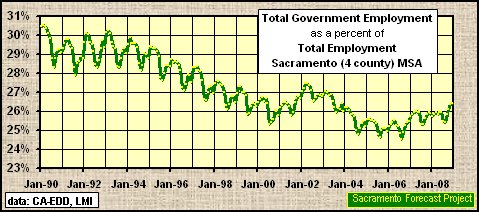[ad_1]
A.Introduction
As traditional court processes become unpopular, there has been recourse to flexible modes of adjudication through alternative dispute resolution. In the criminal justice context, alternative dispute resolution mechanisms encompass several practices that are not available in the mainstream criminal justice system. These practices include victim-offender mediation, family group conferencing, victim assistance programs, sentencing circles, and community service. The use of the aforementioned processes in the criminal justice system is linked to the restorative justice movement, which seeks to shift the emphasis from the violation of the state and the need for punishment, towards reparation to the victim. The most common process under the restorative justice movement which this article will examine is victim-offender mediation.
Victim-Offender Mediation (“VOM”) is a process that provides an opportunity for the victim and offender to have face-to-face discussions in a structured setting with the help of a mediator, to hold the offender accountable and make amends for the harm caused to the victims. VOM focuses on dialogue, forgiveness, accountability, and reconciliation. The processoriginated from Canada as an experiment in Kitchener, Ontario, in the early 1970s, when a young officer convinced a judge that two youths convicted of vandalism should meet with the victims of their crimes. After the meetings, the judge ordered the youths to pay restitution to those victims as a condition of probation. This experiment later evolved into an organized victim-offender reconciliation program.[1]
B.Legal bases for VOM in Ghana:
In many jurisdictions across the world, especially in Latin America, the use of VOM is based on specific enabling legislation. In Ghana, there are three legal provisions that may form the legal bases of VOM:
Section 64(1) of the Alternative Dispute Resolution Act, 2010 (Act 798) provides that the court may at any stage of a proceeding refer a matter or part of a matter pending before it to mediation. The law requires the court to make this reference if in its view, meditation will facilitate a resolution of the matter.
It is interesting to note that some portions of the rest of the provisions under section 64 cast doubt on whether the section applies to criminal proceedings to be a legitimate basis for VOM in Ghana.
Sections 64(2) reads as follows:
(2) A party to an action before a court may, with the agreement of the other party and at any time before final judgment is given, apply to the court on notice to have the whole action or part of the action referred to mediation.
From section 64(2), a party to a pending action in court may on the agreement of the other party, apply to have part of or the whole matter referred for mediation. Only accused persons and the prosecution are recognized as parties in criminal proceedings, therefore a victim cannot apply for a matter to be referred to mediation. At best, the prosecution may do so on behalf on the victim, but the victim cannot direct the prosecution on how to handle the case. As was noted by Wiredu J in Mbrah v Johnson[2], “……a complainant may have some interest, but he or she is principally and invariably merely a witness. She cannot decide in which court the prosecution of the case is to be conducted.” It will also be odd to grant an accused person who is a party, the right to apply for the matter to be referred to mediation. It is therefore inconsistent to assert that section 64(2) applies to criminal proceedings.
For section 64(3), it reads,
“A reference under subsections (1) or (2) shall state
(a) the nature of the dispute;
(b) the monetary value of the claim, if any;
(c) the reasons for the reference; and
(d) the remedy sought
and shall have attached copies of the pleadings and any other documents the court considers relevant.
The above sub-section uses terms that are more akin to civil proceedings – monetary value of claim, the remedy sought, and pleadings. Pleadings are not used in criminal proceedings. Criminal proceedings are instead initiated either with a charge sheet or a summons. From the foregoing, it is controversial whether the lawmaker intended that the mediation process recommended in that section be applied to criminal proceedings.
(ii)Section 73 of the Courts Act, 1993 (Act 459) provides:
Any court, with criminal jurisdiction, may promote reconciliation, encourage and facilitate a settlement in an amicable manner of any offence not amounting to felony and not aggravated in degree, on payment cases of compensation or on other terms approved by the court before which the case is tried, and may during the pendency of the negotiations for a settlement stay the proceeding for a reasonable time and in the event of a settlement being effected shall dismiss the case and discharge the accused person [emphasis mine]
The law encourages courts with criminal jurisdiction to promote reconciliation between the victim and offender and facilitate a settlement. The settlement could be by compensation or by any means approved by the court. The language used in the above provision shows an intention by the lawmaker to prescribe a VOM process. The court may decide to put a hold on the proceedings until settlement. If they settle, the court must dismiss the case and discharge the offender. It should be noted that the provision only covers felonies and serious offences that are aggravated in degree. All forms of felonies and serious offences are therefore not within the scope of offences amenable to VOM- this is the usual position in many countries.[3] The offence prescription is essential because making it possible for certain serious crimes (like rape, murder, and robbery) to be dealt with by mediation could instill fear of re-victimization, and this can lead to self-help methods that can manifest in instant justice to offenders. The shortcoming of the above provision is that it does not empower the victim or offender to apply for the matter to be referred to mediation.
(iii) The Children’s Act, 1998 (ACT 560) expressly recognizes the VOM process in the juvenile criminal justice system. The law provides for the composition of a child panel to deal with non-serious offences committed by juveniles by using VOM.[4] During the mediation, the panel can propose that the child renders an apology or restitution to the offended person.[5]
C.Underlying reasons for its use:
Using VOM is necessary to ensure that victims are not disenfranchised from participation in the criminal justice system. Usually, the victim is wholly detached from the process unless required to identify the offender and testify in court. The apparent neglect of victims is reflected in the silence on the right of victims in the 1992 Constitution. The Constitution, which has stipulated fair trial rules comprehensively, is dedicated to respecting the rights of the accused person. There are no special provisions for victims as they are considered the invisible parties in the entire process.
The late A.N.E Amissah also captures the invisibility of victims in this way:
‘’The traditional practice of dealing with criminal offences was succinctly stated as “a crime is an offence not only against the unfortunate victim but also against the society and in the machinery of justice designed to identify and to punish the culprit the offence against the society aspect is heavily emphasized sometimes at the expense of the victim. As a general rule, criminal prosecutions are undertaken by society, using its corporate name: The Republic. …..the private person, who is the victim of the crime committed, is under considerable disability in the control of the case arising out of his misfortune. The law does not recognize him as a party to the case. He, as a complainant, may be a witness for the prosecution. In that event, his position is generally no different from that of any other witness.”[6] VOM, therefore, serves as the bridge to ensure that victims are involved in the criminal justice process.
One of the main reasons for the use of VOM is that the victim obtains compensation for losses incurred from the commission of the crime. Victims are more likely to receive restitution through VOM than through the court. Restitution could be in the form of financial redress for the victim, repair or return of property, and the provision of some direct services to the victim. By providing restitution, VOM does more than restore the victim to the status quo ante; instead, it aims at restoration to an ideal position. The restitution is not only compensatory but may include an apology and atonement by the offender.
The significant psychological benefit constitutes a factor for the recourse to VOM. The victim may express his or her views directly to the offender, and the victim receives answers to some lingering questions about the offence. It could then be argued that when the victim confronts the offender, the offender gains insight into the impact of the crime. There are certain factors that the court may deem irrelevant which may be contextually relevant to the victim and offenders in themediation. The application of this theory to VOM reflects the fact that a victim is a real person and not an invisible entity.
VOM is an easier mechanism to use in cases that are so minor that there is no need for a full trial in court. Such cases are easier to resolve, and the victims feel more encouraged to take part in disposing of such matters quickly, promoting effective case management. This relieves the courts of their ever-increasing workload.
VOM relieves tension that might otherwise have been created by the formal court system and gives a sense of power to the parties. The ability to navigate a stressful criminal process empowers both sides.
D. Shortcomings of the VOM process:
Critics of VOM argue that the process incorrectly presumes that a victim’s negative feelings can be expressed and addressed in a couple of hours spent mediating with the offender.[7] The response to this argument is, even though a victim’s emotional needs may ultimately best be addressed by a mental health professional, criminal mediation offers the victim a unique opportunity they do not have access to in the traditional criminal proceedings, i.e. to meet and confront their offender.
To others, the view that victims want increased participation in the criminal justice process might be a fallacy after all. Some victims feel that VOM processes are not sufficiently punishment orientated. They are thus unwilling to take part or may be disruptive if they participate. Such victims prefer the offender faces the full rigor of the law.
There have been concerns that the process may enhance the fear and stress suffered by victims and hence constitute secondary victimization.[8] Sometimes, the conduct of some offenders may render the entire process nugatory. During the mediation, the offender may be unwilling to show remorse, apologize, or admit responsibility for their actions. Some offenders may fake remorse during the process, hoping to get lenient sentences. This attitude makes a mockery of the entire process, and the apparent reconciliation is then no reconciliation at all. Some offenders might even rationalize their behavior by putting up a moral justification for their actions. Some may even become highly defensive and blame the victims. For instance, a burglar could blame the victim for having a weak security system in their building.
D. Conclusion
VOM has heralded a new dawn for victims and offenders to have equal access to the justice machinery. Indeed, this form of restorative justice is both forward-looking and backward-looking as it deals with the effects of a crime and also how to prevent them in the future.[9]
For VOM to thrive, there must be active measures to that effect. It is imperative for key players in the criminal justice system to be trained and informed on the principles of VOM and how best they can implement this mediation program. Mediators can also receive additional training to undertake this unique mode of mediation. There should be a general explicit recognition of VOM through legislation or by the amendment of the Alternative Dispute Resolution Act to complement the provision in the Courts Act. This recognition should stress voluntariness and the need for consent of the victim before the commencement of mediation. There should also be a prescription for the victim or the prosecution to apply for a criminal matter to be referred for mediation.
VOM achieves accountability and fairness in the criminal justice system between offenders, victims, families, and societies at large. Stakeholders must therefore have a renewed attitude towards criminals and revise their conceptions of what constitutes punishment and sentencing, as well as the need for accountability to the victims.
[1] Kitchener Experiment, Peachey, 1989 at p.14-16
[2] (1973) GLR 213 at
[3] Albert Fiadjoe, Alternative Dispute Resolution: A Developing World Perspective, p. 69
[4] Section 32(1) of Act 560
[5] Section 32(6) of Act 560
[6] A.N.E. Amissah; Practical Problem of Private Prosecutions [1970] VOL. II NO. 2 RGL 115—120
[7] Larysa Simms, Criminal Mediation is the BASF, of the Criminal Justice System: Not Replacing Traditional Criminal Adjudication, Just making it Better, 2007
[8] Côté & Laroche, 2002; Wemmers & Canuto, 2002
[9] Skelton et al. Acta Criminologica, 2008; p. 47
Photo by Marcel Ardivan on Unsplash
[ad_2]
Source link





More Stories
Will a review of Iran’s hijab law stop the protests? – HotAir
The Importance of How You Announce Your Company’s M&A Deal – KJK
Iran’s morality police dissolved, says prosecutor general